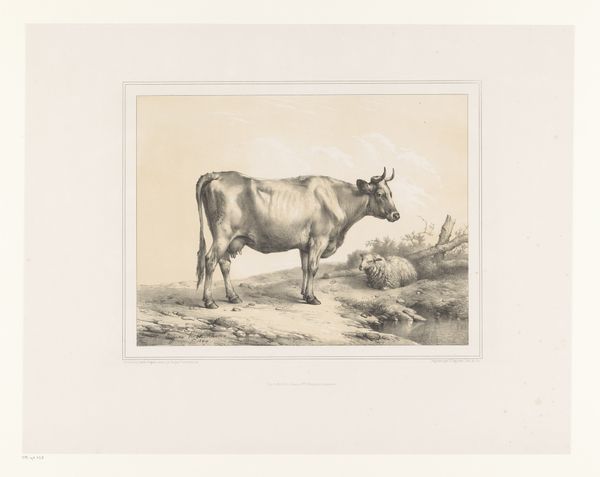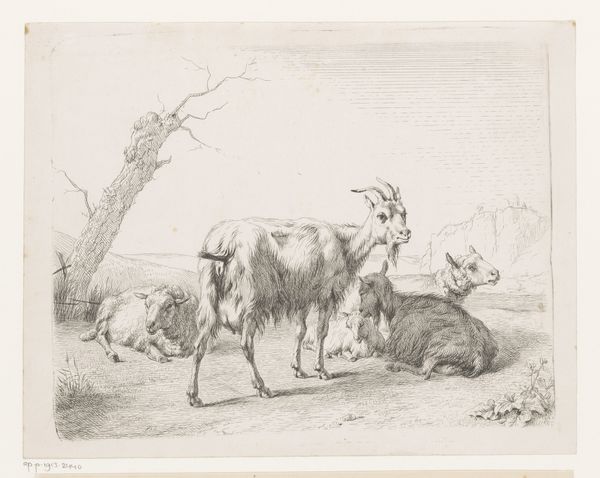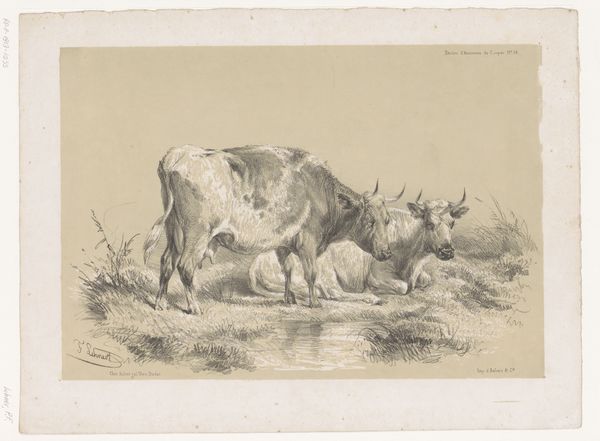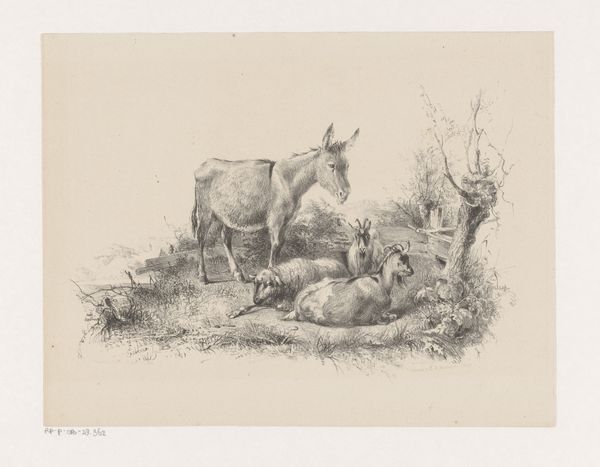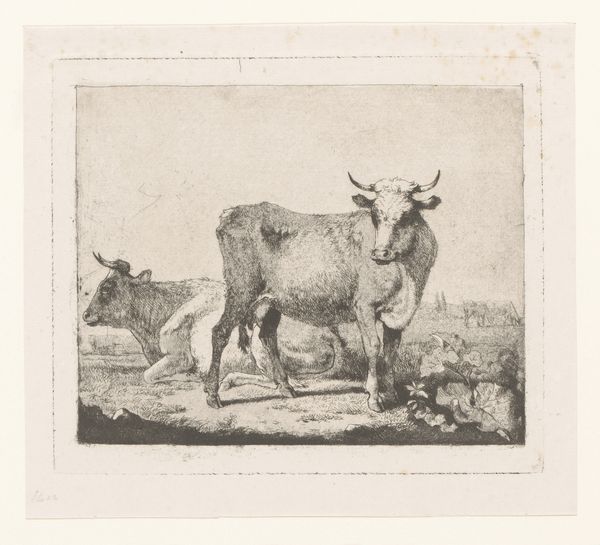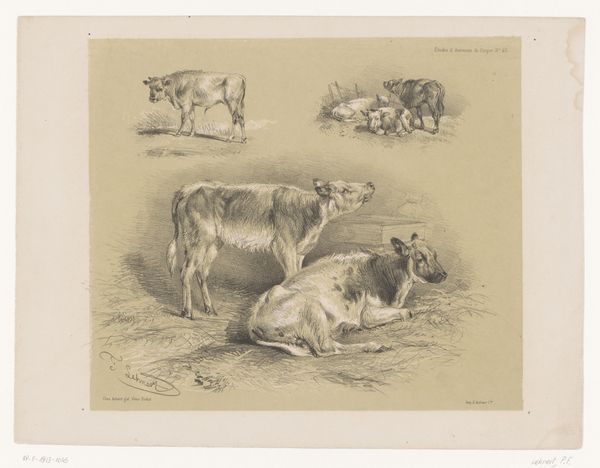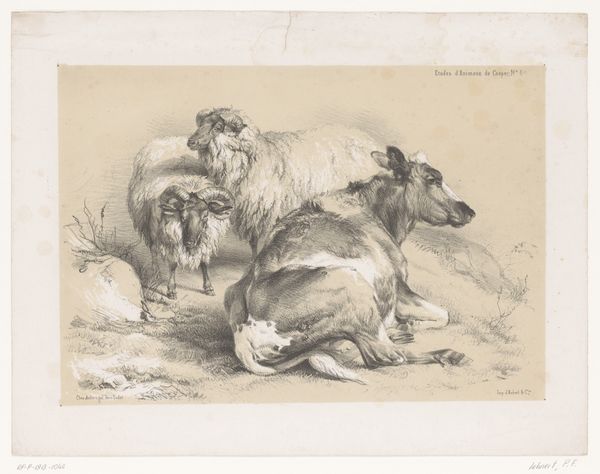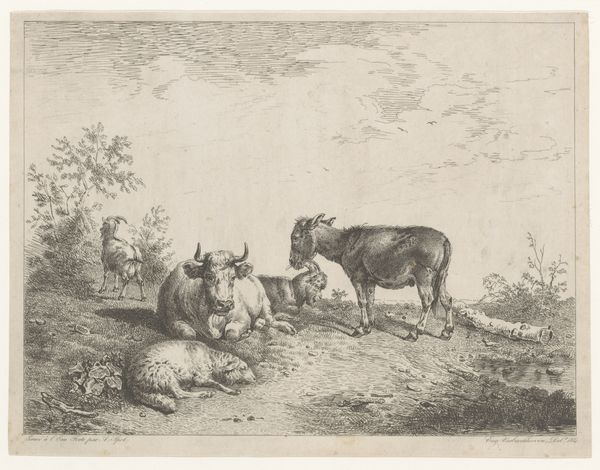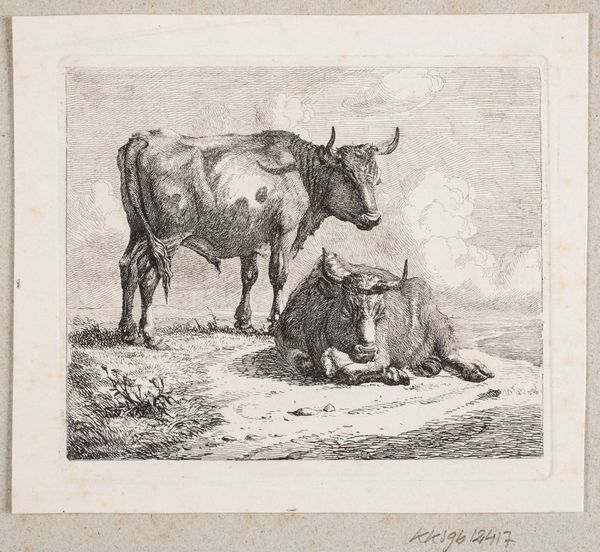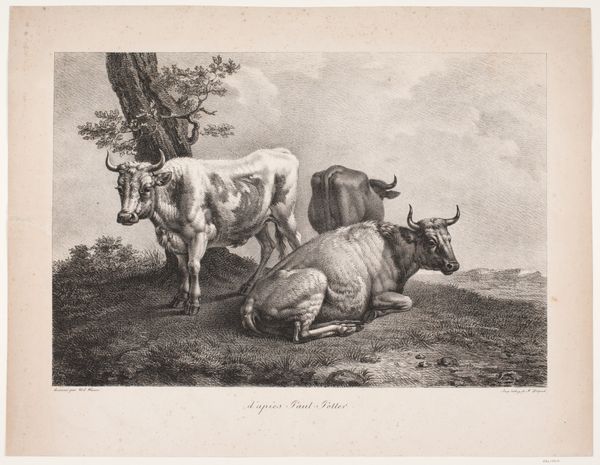
drawing, graphite
#
drawing
#
landscape
#
romanticism
#
19th century
#
graphite
#
genre-painting
#
realism
Dimensions: height 450 mm, width 621 mm
Copyright: Rijks Museum: Open Domain
Curator: At first glance, I am struck by the serene stillness evoked by this pastoral scene. The monochromatic palette lends a quiet intimacy to the encounter between the two cows. Editor: Indeed. We're looking at Eugène Verboeckhoven’s 1844 drawing, "Two Cows," housed right here at the Rijksmuseum. Verboeckhoven, a master of animal painting, used graphite to bring these creatures to life. It makes one consider the status of the pastoral image during the rise of industrial farming. Curator: Fascinating to consider. Focusing on materiality, the very texture of the graphite on paper draws me in. The soft, almost blurred lines suggest a kind of vulnerability, despite the subject’s animal nature. One wonders, how was such a tender quality produced? Was there a specialized technique used? Editor: What strikes me is how genre painting served to idealize agrarian life even amidst immense social upheaval in the 19th century. How was an image like this, probably commissioned and destined for a private collection, participating in broader conversations around labor, land ownership, and food production? Curator: It's a powerful point. Perhaps the consumption of images like this offered a momentary escape, a nostalgic yearning for an idealized past. There's also a delicate balance here; the cows, these valuable resources, are also rendered with almost anthropomorphic gentleness. Did that treatment of the animal exist more readily than treatment of working people? Editor: It raises many important questions, and underscores the powerful role museums have in shaping the narratives around artworks. Works such as these were central in both depicting and shaping a nostalgic desire to reclaim an idealized version of nature through a period of great transition and immense socio-economic transformations. Curator: Examining the processes behind "Two Cows," from its material construction to its role in a wider cultural landscape, gives it an additional depth. Editor: Absolutely. And analyzing its context offers valuable insight into the social function of such a seemingly simple artwork, as we bring it forward through history.
Comments
No comments
Be the first to comment and join the conversation on the ultimate creative platform.
